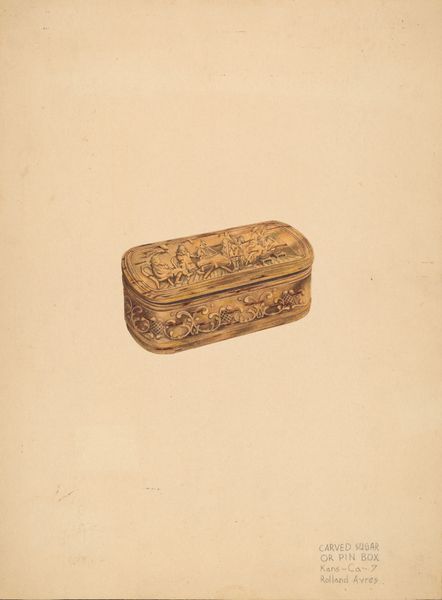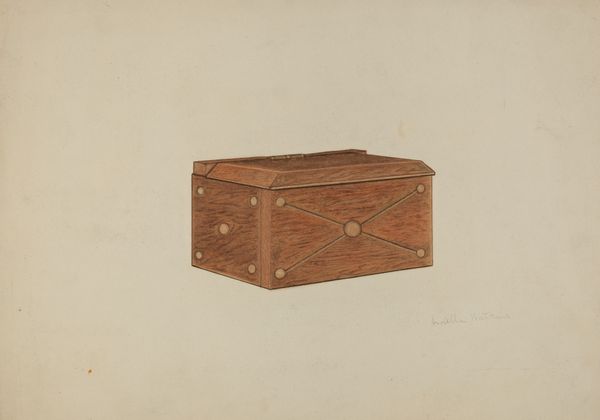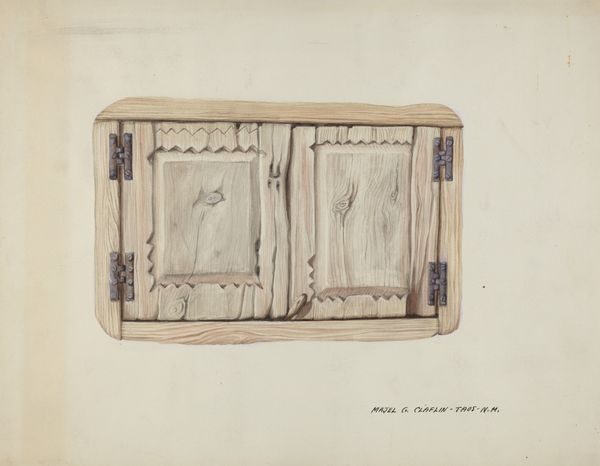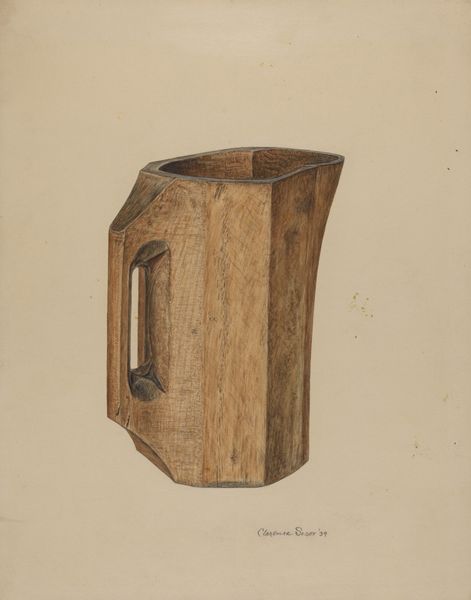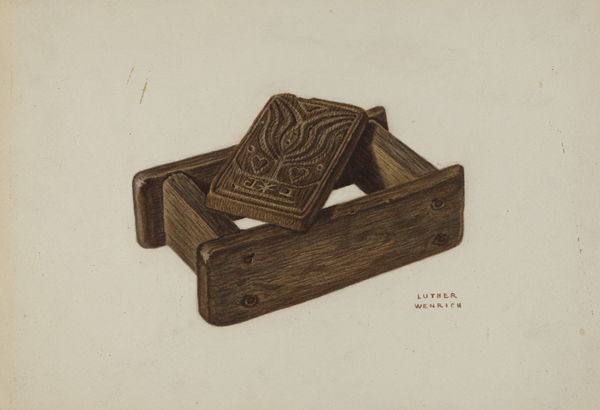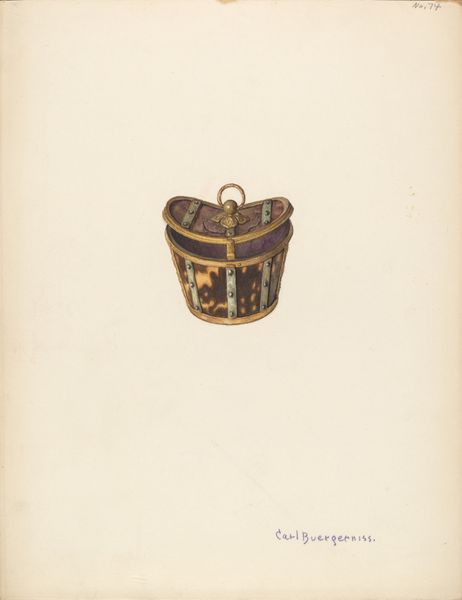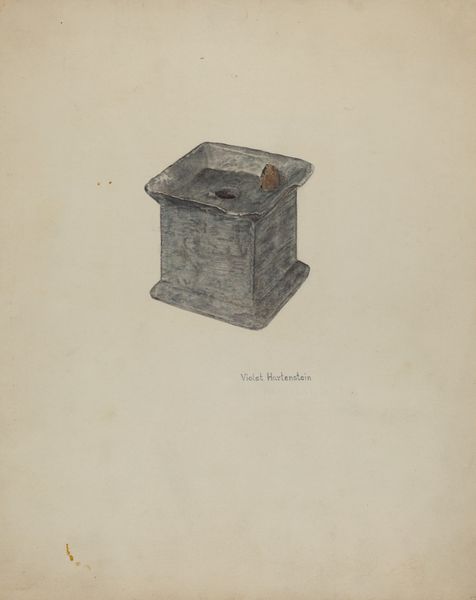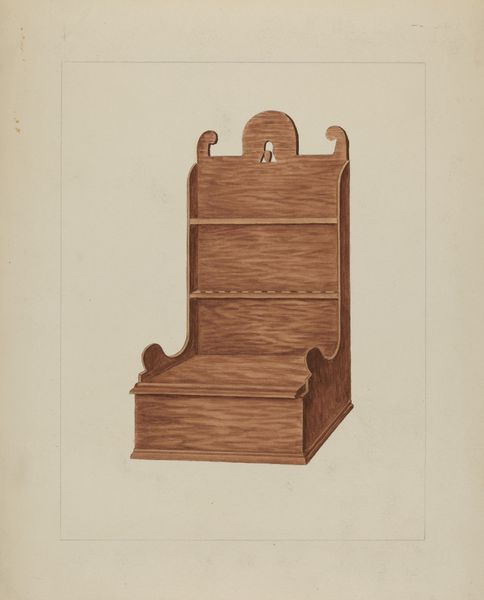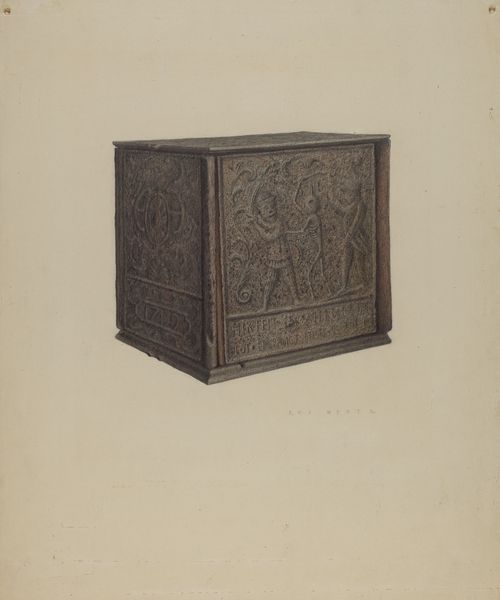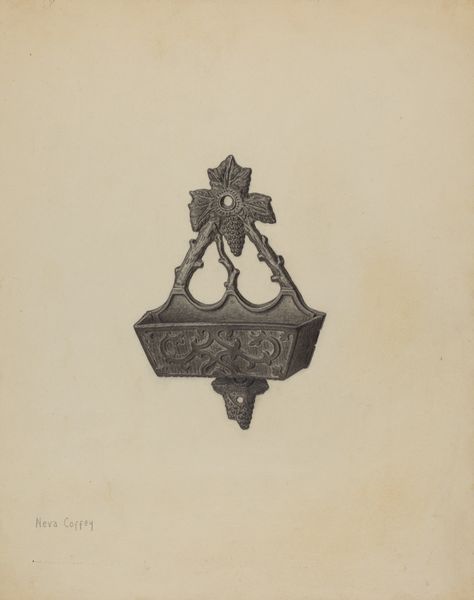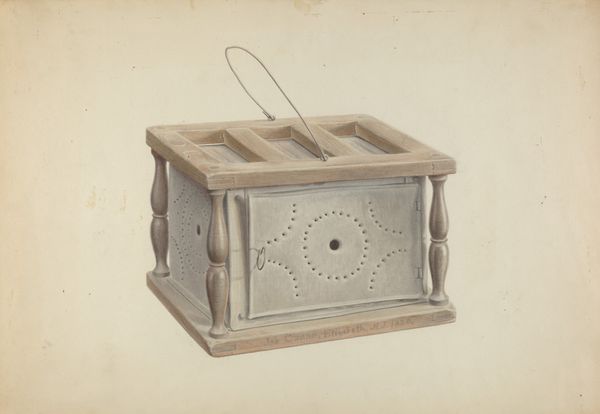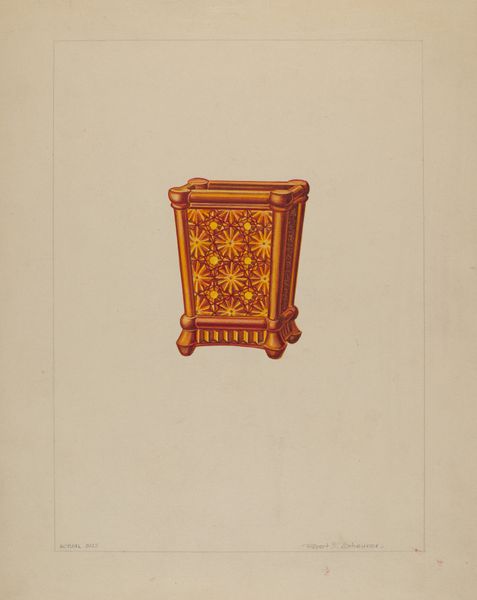
drawing, watercolor, wood, pendant
#
drawing
#
watercolor
#
wood
#
watercolour illustration
#
watercolor
#
pendant
Dimensions: overall: 34 x 30 cm (13 3/8 x 11 13/16 in.) Original IAD Object: 5 1/4" long; 2 3/4" wide; 3" deep
Copyright: National Gallery of Art: CC0 1.0
Curator: Today, we are looking at "Butter Mold," a drawing and watercolour piece from around 1940 by Franklyn Syres. The work also includes elements of wood, characteristic of the mold. What are your initial impressions? Editor: My immediate reaction is one of domesticity, but not in a cozy way. There's a certain restraint in the colors and the sharp edges that makes it feel more like labor than leisure. It’s quite small isn't it, with each mold design quite detailed. Curator: Yes, the scale invites close examination. Let’s consider the composition: two distinct, cube-like sections joined, each with a letter and foliate carving, centered on an empty background. Note the meticulous application of watercolour capturing the texture and subtle tonalities of the wooden mold. What draws your eye in this piece? Editor: For me, it's about labor division, how are the genders represented here? The tool embodies an older, agricultural era, probably where butter-making fell strictly into the domain of women, particularly on farms. Curator: The object depicted, a butter mold, obviously functions as a domestic tool, but what about its symbolic form? I suggest, if we carefully scrutinize its lines and geometry. The angular form, particularly the cubic blocks that constitute the mold, are a perfect example of postwar modernity that rejects all ornamentation. Editor: I see your point about modern rejection. But let's consider the other layer: the initials framed by leaves – personal branding. This suggests an act of personalization in what might otherwise be monotonous labor. It’s an act of resistance. And this tension resonates with women's complicated position, where both are marginalized, and must labor at this work. Curator: Perhaps we should reflect on Syres’ artistic choice. The medium, predominantly drawing and watercolor, allows capturing not only the object's likeness but also its feel; the grain of wood almost palpable beneath the layers of pigment. Editor: Yes, and watercolor in this context itself represents an act of copying, almost documenting the design and the tool itself. Does the artist have his own feelings of ownership to the design perhaps, rather than the mold itself? What are we really looking at here? Curator: It provides an introspective, nuanced interpretation of quotidian forms of domestic objects and production that continues to interest art lovers of our time. Editor: Indeed, by rendering a humble tool as high art, this watercolor opens broader conversations on design, work, gender, authorship, and the art of the every day. It continues to fuel reflection even in the 21st Century!
Comments
No comments
Be the first to comment and join the conversation on the ultimate creative platform.
